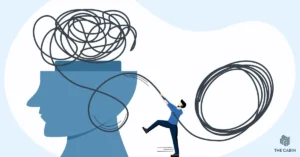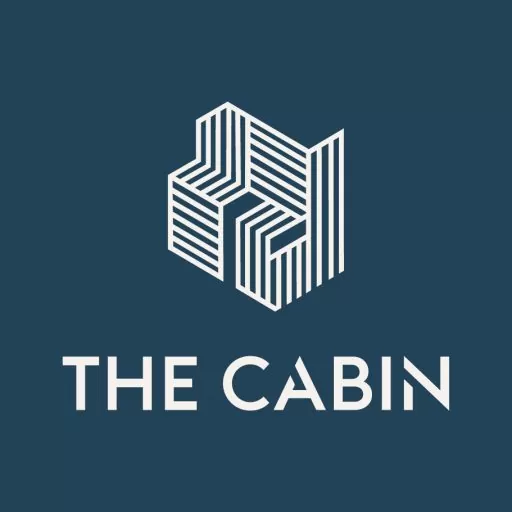We previously put out an article titled “The Psychology behind the Controversial 12 Steps in Addiction Recovery” which translated AA’s 12 Steps into the language of Cognitive Behavioural Therapy (CBT), an incredibly effective and widely recognised method of addiction treatment which we use as one part of our comprehensive treatment programme across all treatment centres run by The Cabin Addiction Services Group. The article was received well, but it also sparked questions regarding the implementation of these steps from a CBT perspective.
One of the main qualms voiced about the 12 Steps is its focus on religion, but when we remove that aspect and focus on the CBT translation, the 12 Steps is a programme that most addicts find quite helpful in addiction recovery. The following aims to guide you through the 12 Steps from a scientific, psychological perspective.
Implementing the 12 Steps from a CBT Perspective
Take a look at this overview of the 12 steps translation by clicking here. Now, we will break down each step a little bit further to offer a better understanding of how we can use the 12 Steps, despite religion, to create an integral part of addiction recovery.

Step 1
AA: We admitted we were powerless over alcohol (drugs/compulsive behaviours) — that our lives had become unmanageable.
CBT: We accept the compulsive nature of the disease, recognise its symptoms and detail the costs and consequences of our addictive behaviours.
Explanation: The American Society of Addiction Medicine defines addiction as the following:
“Addiction is characterized by inability to consistently abstain, impairment in behavioural control, craving, diminished recognition of significant problems with one’s behaviours and interpersonal relationships, and a dysfunctional emotional response. Like other chronic diseases, addiction often involves cycles of relapse and remission. Without treatment or engagement in recovery activities, addiction is progressive and can result in disability or premature death.”
In Step One it is important to accept that addicts are ‘powerless’ over the disease of addiction just as those with chronic heart problems are powerless over theirs. Indeed, someone who is prone to high blood pressure or heart failure can minimise their chances of developing a full blown disease with certain behavioural and nutritional lifestyle changes, and so can addicts — but while symptoms can be minimised, the disease will never fully go away.
Another part of Step One deals with the concept of manageability. What price have you paid literally, emotionally, mentally and physically?
At The Cabin, we use mind maps to help identify these features and accept the fact that we are addicted and that our ability to control ourselves in many ways has been lost.
Step 2
AA: Came to believe that a Power greater than ourselves could restore us to sanity.
CBT: We create a new vision of life replacing the belief system we developed through our addiction with a positive belief system to help us experience transpersonal growth.
Explanation: At Step Two, sceptics are already showing their faces when it comes to a higher power. However, this in no way has to mean God in the traditional sense of the word. According to CBT methods, Step Two is a chance to create an internal process of self-development and re-balancing within. Step Two is a time for building a life vision based on recovery principles and to begin practising positive self-talk.
Step 3
AA: Made a decision to turn our will and our lives over to the care of God as we understood God.
CBT: We committed to following the guidance of a process greater than ourselves in order to better manage our symptoms.
Explanation: If sceptics were showing their faces at Step Two, Step Three will see many more want to back out of practicing the 12 Steps. However, we cannot stress enough that God in these terms does not have to mean God himself, or even committing to any type of religious belief system. Instead, open yourself to the possibility of a spiritual experience, whether outside or inside of yourself.
For some, believing that everyone is connected with all beings and nature in some way is enough of a belief system. Buddhism suggests that divinity resides within the person.
Regardless of what you choose to believe, Step Three focuses on exploring self-development philosophies and lifestyles (mindfulness meditation and positive psychology) which are highly effective life pathways for many recovering addicts. Focusing on these philosophies will help a person to stop trying to control everything in a pathological way.
Step 4
AA: Made a searching and fearless moral inventory of ourselves.
CBT: We comprehensively list our problematic thoughts, feelings and behaviours that are part of our condition.
Explanation: Scrapping the term ‘moral inventory’, Step Four is about restoring mental and emotional balance by recognising and listing problems we have with our negative thoughts, feelings and behaviours (symptoms of the disease).
It is also important to list any resentment you might have with other people and question in which ways you may have contributed to those situations.
In Step Four we also introduce the ABCs of CBT to explore the ineffectiveness of unhealthy thoughts, emotions and behaviours which we will share and change in the following three steps.
Step 5
AA: Admitted to God, to ourselves, and to another human being the exact nature of our wrongs.
CBT: We disclose those problematic thoughts, feelings and behaviours to a sponsor, counsellor or support group, knowing that the addiction cycle depends on secrecy and isolation.
Explanation: In Step Four you were required to make a list of unhealthy thoughts, emotions and behaviours. In Step Five it is time to share this list with a trusted support network and/or advisor. Addiction thrives on secrecy and so sharing these aspects of one’s self helps to alleviate a lot of the tension that holds addiction symptoms in place.
Indeed the most daunting step thus far, sharing this list with others will actually cause the production of dopamine in the brain, in turn creating a healthy brain chemical balance — the positive effects of which you will never truly understand until you have experienced it.
Step 6
AA: Were entirely ready to have God remove all these defects of character.
CBT: We list the ineffective character traits which we have developed as a coping mechanism for living with our disease.
Explanation: ‘Ineffective character traits’ refer to traits that are present either because or as a result of the disease of addiction. Also referred to as defense mechanisms, these traits lead to an imbalance in one’s personal life. These traits may include, but are not limited to:
- Behaving aggressively or passive aggressively
- Being overly compliant or compromising ourselves
- Sabotaging and game playing
During Step Six, it is important to take a look at these behaviours and do your best (with the help of your sponsor, counsellor or group) to understand the function of these behaviours. In what way were these behaviours your way of getting specific needs met? Once you have an understanding of this, it is easier to move past these actions and create new positive behaviours.

Step 7
AA: Humbly asked Him to remove our shortcomings.
CBT: We use positive self-talk and behaviour assignments to put our effective new philosophy into practice.
Explanation: Whether or not you believe in God, CBT takes Step Seven away from the higher power and instead asks you to turn to yourself to remove your own shortcomings. In this way, Step Seven involves replacing your ineffective personality traits with effective ones. Step Seven is important because the symptoms of addiction and the traits developed to deal with them will not go away on their own. It is important to train your own mind to act in different ways than you are currently programmed, stimulating positive self-regard and feedback from others.
Step 8
AA: Made a list of all persons we had harmed, and became willing to make amends to them all.
CBT: We comprehensively review ways we have harmed others through our addictive behaviours.
Explanation: Active addiction hurts many more people than just the addict. In Step Eight it is important to make a comprehensive list of everyone who was hurt by you during your active addiction on both personal and professional terms.
At this point, a list of people you hurt and willingness to attempt to make amends is enough. A plan for how to make amends will be looked at in the next step.
Step 9
AA: Made direct amends to such people wherever possible, except when to do so would injure them or others.
CBT: We use behaviour assignments to correct the damage done to our personal and professional relationships by our addictive behaviour.
Explanation: A highly rewarding and dopamine producing activity, making amends is achieved through direct action. For each person on Step Eight’s list, the goal in Step Nine is to create a plan of action in which to make things right with these people. It is important to remember, however, that there is a big difference between apologising and making amends.
Making amends to those in your personal and professional life not only helps the people which you have hurt in the past, but it is a great way to build your own self-confidence back up — a way of regaining your standing within communities where your previous actions have damaged your reputation.
Step 10
AA: Continued to take personal inventory and when we were wrong promptly admitted it.
CBT: Whenever we experience problematic thoughts, feelings or behaviours we make a review using ABC and take a recovery action as soon as possible.
Explanation: The old phrase ‘practice makes perfection’ comes to mind here. Although you have defined your negative actions and have come up with ways to act in a positive manner instead, it will not always come easy.
Step Ten is about keeping an inventory of your on-going actions and admitting when you fall back into your old ways, and then taking corrective action to rectify these actions as soon as you can. It is recommended that you keep an ABC journal, done at the end of each day for at least three months, which will help you understand the reasons for which you fell back into these old behaviours.
A stands for the activating event, or the event that made you fall back into old behaviours. B stands for beliefs, or the evaluation of the situation which you come to in your own mind whether rational or irrational. C stands for the consequences, or the emotions, behaviours or thoughts which you come to after evaluating the situation. Keeping a journal of these events will help you understand where and when you are more apt to fall back on your old, negative behaviours and can be used as a guide to gain a better understanding of where you need to work on things in order to react positively in the future.
Step 11
AA: Sought through prayer and meditation to improve our conscious contact with God as we understood God, praying only for knowledge of God’s will for us and the power to carry that out.
CBT: We use meditation techniques to improve our mental and emotional balance and come into closer contact with our higher spiritual faculties.
Explanation: The mention of God comes up again in Step Eleven, but in CBT terms you can relate this to growing along spiritual lines or maturing in ways which nurture the ‘true self’, distinct from our ego or public persona or image. Essentially, it is the quest to find a connection with our ‘transcendent self’ which will offer a long-lasting, slow-release reward feeling. The sense of being content with ourselves, being connected to the deeper energy systems and powers the universe has to offer. Or in other words, becoming at peace with oneself.
Step 12
AA: Having ads a spiritual awakening as the result of these steps, we tried to carry this message to alcoholics (addicts), and to practice these principles in all our affairs.
CBT: Having changed ourselves we start supporting others with addiction problems, knowing that this is the most effective form of ongoing therapy for us.
Explanation: The ‘spiritual awakening’ in Step Twelve could be described as a profound attitudinal shift in which one is completely invested in recovery and is doing everything and all it takes in order to maintain sobriety and a new mental/emotional balance.
Helping and supporting others in achieving this state helps to create a sense of identity by being involved in meaningful work. Those who have been through the depths of addiction and have come out the other side have something to give to those still in active addiction or just starting their own recovery process. Sharing your experiences and helping others is a rewarding experience and can help produce dopamine in the brain in a much longer-lasting way than the short and artificial rewards of substance abuse.
Using the 12 Steps as part of a Comprehensive Addiction Treatment Programme
One study showed that people actively involved with the 12 Steps ideology during addiction recovery were 2.8 times more likely to abstain from alcohol, drugs or compulsive behaviours. However, the 12 Step programme on its own may not be enough for many addicts to enter into recovery.
The Cabin Addiction Services Group uses the CBT translation of the 12 Steps as just one part of our comprehensive addiction treatment programme. We also include our own Recovery Zones and mindfulness techniques which come together to create an extremely effective model for addiction treatment.





